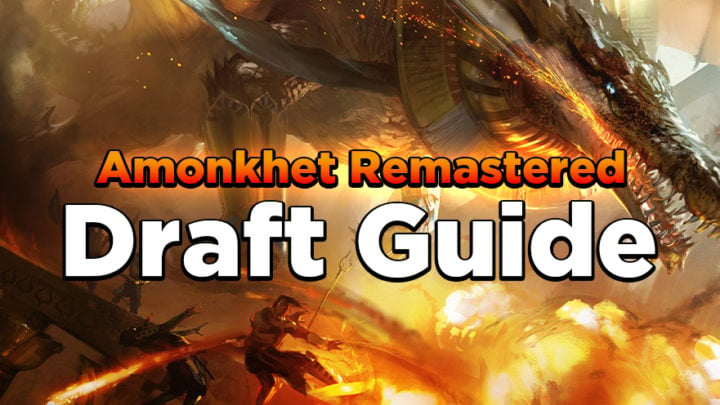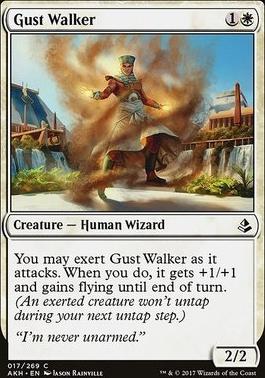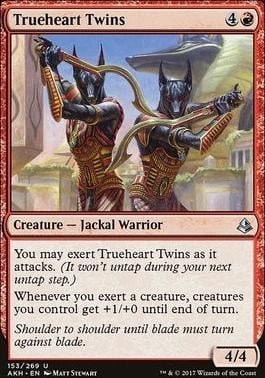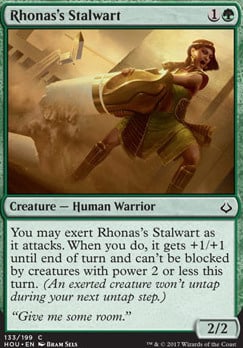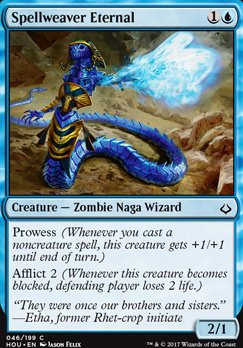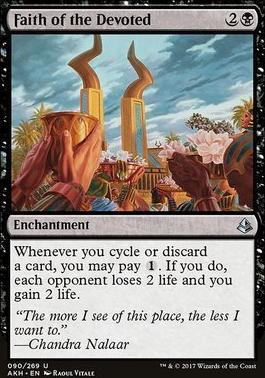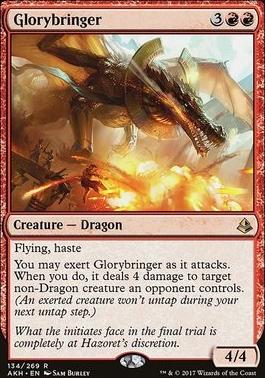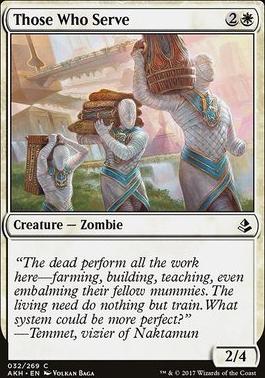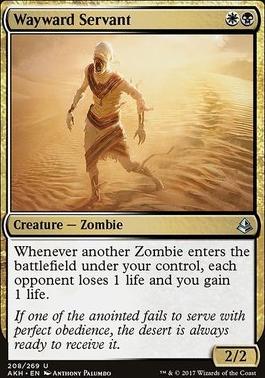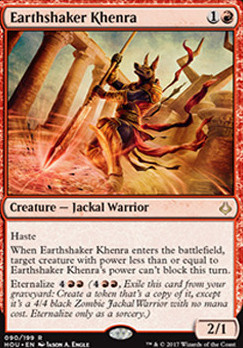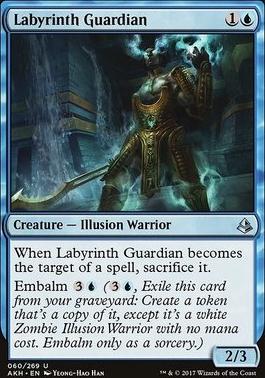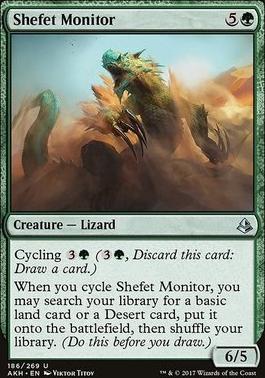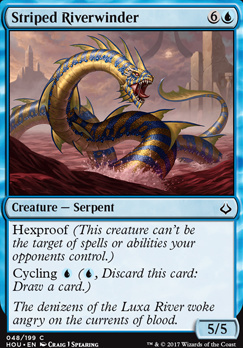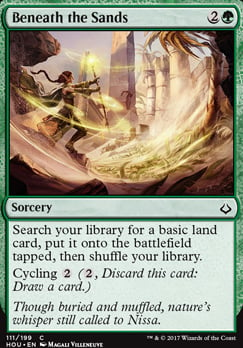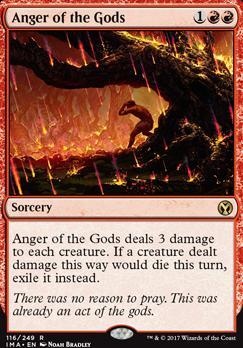Alright readers, who’s ready for a bit of sun and sand?! Amonkhet Remastered releases imminently on MTGA, bringing back the powerful graveyard synergies and red deck staples that marked Magic’s stay in the realm of the God-Pharaoh. Historic players are abuzz figuring out the impact of these new cards (particularly those looking to build around The Scarab God and The Locust God) – but this release also means we get to experience a remastered version of a much-loved Limited format!
COMMITTED TO MEMORY
Amonkhet and Hour of Devastation, originally released as two sets, are being combined into one big card pool for Amonkhet Remastered – with a few uninteresting or unpopular cards being taken out of each to keep it manageable. It means the format which releases today will demand a new approach, even from players who were drafting the original sets back in 2017. But given how much MTGA has grown since that time, it’s reasonable to assume many players will be embalming and exerting their creatures for the first time; so let’s recap what those Draft formats looked like.
If you were going to try and remaster any two sets into something greater than the sum of its parts, Amonkhet and Hour of Devastation are a fantastic choice. Despite being part of the same block, their Draft environments were biased in opposite directions. Amonkhet was much maligned for devolving into aggro mirrors between red and white decks. Hour was better received but swung a little heavy back towards durdly ramp decks splashing multiple rares that made the early game feel irrelevant. Despite being marketed as a graveyard-centric block with high-profile mechanics like embalm and eternalize, both sets were dominated by creatures with exert, particularly the hyperaggressive Amonkhet.
RACING’S A DRAG
Creatures with exert double-down when declaring an attack (or activating a tap ability, in a few cases) to activate additional buffs and effects at no mana cost. After exerting they don’t untap on their controller’s next turn, but since the buffs from exert made things so hard to block and raised damage, it felt like getting two turns of attacks in advance. The only way for opponents to keep up was to swing back while tapped, leading to a format so slanted towards linear aggression that a card like Slither Blade gained a cult following!
Hour of Devastation was designed to be drafted in combination with Amonkhet boosters and introduced enough cheap blockers and removal to slow down the exert train a little. But an equally important reason for the shift back to greedy decks was the dramatically reduced number of exert attackers per draft since the typical split was HOU/HOU/AKH and Hour had barely any such creatures by comparison.
Drafting three boosters of a combined Remastered set will raise the threat of these all-in aggro decks dominating once more. WotC has compensated by removing a number of the best aggressive commons and uncommons, especially from white. But you can bet that the first day or two of Amonkhet Remastered will see a lot of people testing the limits of these RW and GW exert decks, along with UR Slither Blade prowess.
COMETH THE HOUR
Lucky for UG drafters, I expect that the loss of many key commons and uncommons, alongside the dilution of Amonkhet’s best attackers among the combined Remastered card pool, will clamp down on those super-fast creature decks. This will allow other mechanics to show their strength. Cycling is one of Magic’s most popular mechanics and had a huge presence in both sets that make up Amonkhet Remastered, but it’s in Grixis colours where cycling has the support to become the central theme of a deck.
Cards like Ruthless Sniper, Shadowstorm Vizier, and Faith of the Devoted ended up being a trap in the Amonkhet environment, but once we slow the games down, their power level rises significantly. Combining the sets only helps this deck since Cunning Survivor, Ominous Sphinx, and a range of new spells with cycle ensure there should be good tools in every pack. By far, the most important addition are the Deserts, common cycle-lands, which ended up being some of the most desirable cards in any deck due to their draw-smoothing and a range of strong synergies.
Red is likely to be the most versatile and deepest color in Amonkhet Remastered. While it can definitely form the basis for typical aggro decks with Constructed-tier options Ahn-Crop Crasher, Flameblade Adept, and Firebrand Archer, Hour of Devastation fleshed out a more controlling style of red. It had excellent cycling options like Sweltering Suns, Deem Worthy and Desert Cerodon, as well as the best removal overall; Magma Spray, Puncturing Blow, Electrify and Abrade were all first-pickable. Combine that with free reach from Ramunap Ruins and some ludicrous bombs like Glorybringer and Hazoret, and you can see how red became the in-demand secondary color for aggro and cycling decks alike!
MUMMY DEAREST
Of course, the polar extremes of aggro and control don’t make up the entirety of any format. The most effective midrange gameplan in Amonkhet Remastered looks to be the ever-appealing Zombie Tribal. This Egypt-inspired plane features both white and black cards to represent Amonkhet’s ever-present mummified servants.
The white cards present a significant twist on the typical zombie gameplan, particularly Fan Bearer and Binding Mummy. Rather than buffing your attacks in the traditional sense, as black did with Lord of the Accursed, white zombies tied defenders’ hands while you beat down on their life total! The noncreature support cards played into this as well. Thankfully, the most crushing of them, Time to Reflect, has been cut from Amonket Remastered.
The Zombie deck still looms large as the top archetype in terms of synergy. The balancing factor will be how heavily drafters in a given pod want to fight over the key cards. This happens more than you’d expect for a niche tribal theme since the marquee graveyard mechanics of embalm and eternalize effectively make zombies available to every color and archetype! While many of those cards have also been taken out of the Remastered set, you should still keep these fringe interactions in mind when evaluating Binding Mummy and friends.
BOUNTY OF THE LUXA
The biggest question-mark of Amonkhet Remastered for me is the Gx Ramp archetype, most frequently seen as UG or BG. Amonkhet block features an unusually high concentration of ramp spells, mana dorks, and mana rocks. This includes an unprecedented number of cards that can reliably ramp you by two mana instead of one. While several of them seem to have been trimmed to keep things reasonable, we still have Hope Tender, Oasis Ritualist, Hour of Promise, and (presumably) Weaver of Currents to rocket us up to six or seven mana early in the game.
Much of the ramp in the set also fixes, and there are easy-include cycling duals in the set along with Evolving Wilds, Cascading Cataracts, and Manalith. This makes it a thoroughly reasonable plan to just draft the best rares and bombs from four or five colors, so long as you secure a solid base of green enablers along the way. Amonkhet Remastered features a TON of almost unbeatably good rares, from Glorybringer and the God cycles through to Overwhelming Splendor and Sandwurm Convergence.
Many of the expensive commons and uncommons have cycling, allowing you to overload the top end of your curve. There are also the Aftermathcards; instant and sorcery split-cards where the second side of the card acts like a Flashback ability for the first side. Many of these cards work best when you can cast both sides back-to-back in one turn, effectively making them hidden ramp payoffs! The question for these slower green decks will be how fiercely draft pods fight over the key mana generating cards, and whether they can pick up enough good removal and sweepers to protect themselves against the threat of zombies, prowess and exert.
BUT WHAT ABOUT THOUGHTSEIZE?
One final aspect that must be noted when looking at Amonkhet Remastered is the controversial decision by WotC to not only take cards out of the original sets but to add some new ones in! The list of new cards is short but incredibly powerful; all rares and mythics, which will have a significant impact on the Historic meta.
Getting flashy and popular cards like Thoughtseize, Pact of Negation, Rest in Peace, and Sphinx’s Revelation on MTGA, complete with new Amonkhet art, is definitely big news – just not so much for Draft play. The new cards are all at rare and mythic rare, so even the hot draft picks – like Wrath of God, Hornet Queen, and Collected Company – will be occasional game winners, rather than options that shift the existing archetypes. If anything, they look to make the control and ramp decks more exciting, as most of the additions are either sweepers or expensive bombs.
THE HOUR DRAWS NEARER…
Hopefully, our collective memories have been refreshed on how the Amonkhet Remastered Draft environment will play out across MTGA today – at once familiar and slightly different to the format some of us enjoyed before. If this is successful, WotC may well have hit on an effective method to continue the slow expansion of Arena’s card pool, while still keeping some of the excitement of a new set for Limited players. Good luck on your first day of drafting – just be careful not to exert yourselves too much under the Sweltering Suns!

Tom’s fate was sealed in 7th grade when his friend lent him a pile of commons to play Magic. He quickly picked up Boros and Orzhov decks in Ravnica block and has remained a staunch white magician ever since. A fan of all Constructed formats, he enjoys studying the history of the tournament meta. He specializes in midrange decks, especially Death & Taxes and Martyr Proc. One day, he swears he will win an MCQ with Evershrike. Ask him how at @AWanderingBard, or watch him stream Magic at twitch.tv/TheWanderingBard.

